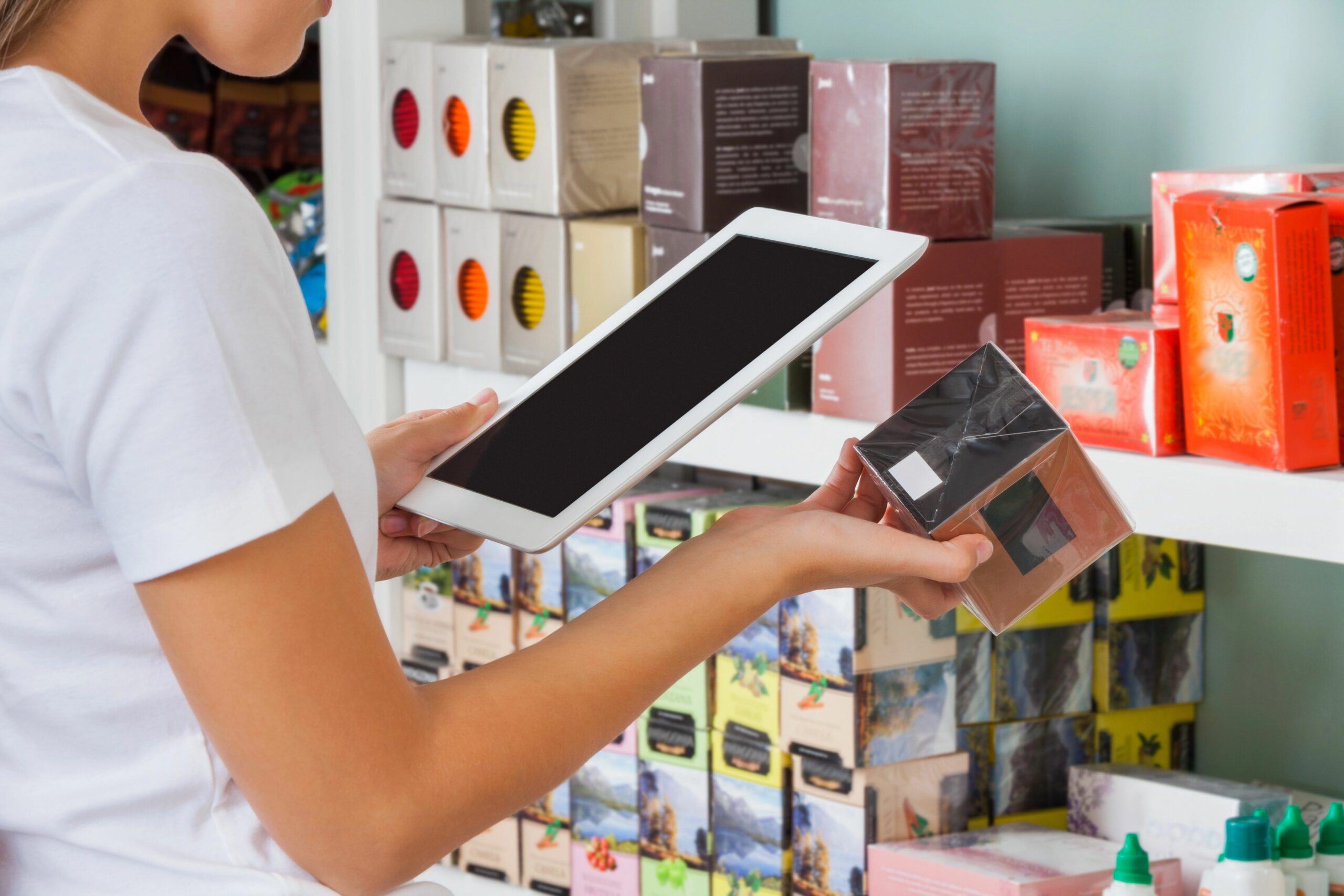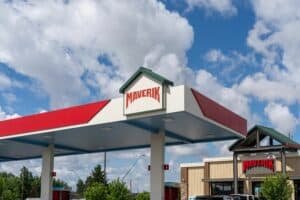
SimpleFoto/Depositphotos.com
August 26, 2025
Will Renewed Retail Interest in Mobile POS Actually Stick Around This Time?
In a recent interview conducted by Retail Touchpoints editor Nicole Silberstein, Nikki Baird — VP of strategy and product for Aptos — outlined her thoughts on a number of pressing issues relevant to today’s retail business.
RFID — gaining momentum with proponents as the cost of the tech declines and consumer tastes align — and the uncertainty surrounding the upcoming holiday season were discussed at length, but the lead-in to the interview was largely centered around mobile POS solutions, and a renewed appetite surrounding deployment thereof.
Mobile POS Means Retailers Can Ditch the Cash Wrap (For More Than One Reason)
Baird was quick to point out that mobile POS was a driving force behind the tech refresh common to so many retailers looking to update their brick-and-mortar operations.
“It does really feel like mobile is an impetus driving technology refresh in stores right now. Retailers want mobile to be more closely integrated into the role of the store employee and store manager,” Baird began.
“They have long complained about how Apple is a different kind of experience and that they can’t be cash wrap-less [like Apple], and yet now I do see many rethinking and really shrinking down that cash wrap and wanting the store associate to be out in front of the cash wrap instead of behind it,” she added.
One major positive to getting employees out from behind the cash wrap, in a static position, is that the sales floor has more human presence, or points of contact, improving customer service (and, likely, basket size and overall purchasing).
Another basis — and perhaps an even more attractive reason — for the renewed interest in mobile POS? Scrapping the floor space dedicated to the checkout.
“I still see some analysts in the industry who distinguish between fixed-till versus mobile, and with tablet formats it really can be both. In fact, a lot of the drive behind mobile now is not employee productivity so much as it is reducing the hardware footprint in stores. They need fewer devices, and they need devices that can be multi-purpose. [With mobile you] can have a shared cash drawer [instead of] a big till that’s a full tech stack of receipt printer, cash drawer, scanner and all those peripherals. And that does seem to be what’s driving this renewed interest in [mobile tech] — that there’s no distinguishing between fixed-till versus mobile, it’s all the same devices,” Baird said.
A ‘Holistic’ Front and Back of Store View Still Facing Difficulties, and Security as well as Compliance Concerns Remain
It’s not all sunshine and rainbows when it comes to mobile POS solutions coming online in the broader retail segment, however.
As Baird noted, Apple appears to be winning the front of store race, while Android is holding dominance in the back of the store. So, while Apple solutions may be more prevalent for sales floor associate use cases, things such as inventory management, receiving, cycle counts, and picking orders for omnichannel requests are being handled by “traditional retail-hardened Zebra kind of device[s].”
This bifurcation is preventing a “holistic picture of the store environment,” she added, and that divide may need to be repaired before mobile POS can gain a more rock-solid foothold. Mobile device management (MDM), regarding logistical concerns related to powering the array of retail mobile devices attached to the store, also lacks an intelligent, unified structure unless one vendor supplies the bulk of a location’s equipment — a front on which progress is also being made.
Baird also spoke to the emerging security and compliance concerns attached to the gathering of customer data and the transmission thereof.
“When you get into customer data then we will see more of a push for a local model on a device and not sending that data over the cloud, even within a retailer’s network. If you can have a local language model on the device, and you can have that interaction at the local level, then the security profile is much more manageable,” she said.
In tandem with AI integration on front-line retail, retailers are responding via the creation of AI approval councils, designed to massage enterprise compliance with governmental-slash-jurisdictional legal demands pertinent to customer data. While the EU is the proving ground for much of these discussions, compliance concerns are being tackled proactively stateside.
“We’re in compliance training season, and I’m taking the EU AI compliance training, and let me tell you, anything that uses consumer and personal information in the EU is going to be a constraint. We actually have some retailers that are instituting AI Approval councils. So the retailer is saying, ‘If you have an AI initiative, you have to put together what it is, what data it’s using, how it’s using that data and what kind of result it’s going to return, and you have to submit it to the committee for review, and it has to be approved before you can go off and do it,’” Baird concluded.
Discussion Questions
Will renewed retail interest in mobile POS actually herald the gradual end of the traditional cash wrap this time around? Why or why not? What headwinds remain?
Which retail segments, or major entities, will be first to adopt widespread use of mobile POS systems versus traditional cash wraps? Which segments, or entities, are likeliest to hold out?
How important is ending the divide between the front and back of store, to create the “holistic” mobile POS view put forth by Baird? Are there any solutions you might foresee?
Poll
BrainTrust
DeAnn Campbell
Head of Retail Insights, AAG Consulting Group
David Naumann
Marketing Strategy Lead - Retail, Travel & Distribution, Verizon
Mark Self
President and CEO, Vector Textiles
Recent Discussions







Mobile POS gives retailers the flexibility to check out customers on the fly. It tends to work best in highly controlled environments – like Apple stores – but in theory, it can be applied anywhere. That said, mobile POS is really just part of a much broader discussion about checkout technology. Checkout remains a pinch point in retail, and it’s a sunk cost that retailers are still trying to streamline. Current solutions all have drawbacks – self-checkout has loads of detectors, just walk out is expensive and glitch-prone, and scan-and-shop is still embryonic in the US. Checkout is still ripe for disruption!
Mobile POS in higher-volume, lower customer-service oriented verticals (ie: grocery, pharmacy) only works for the transactions that are exceptions – sidewalk sales, outside-the-store purchases like propane, curbside pickup, etc. 90%+ of transactions will still go through the front-end, thus limiting retailer desire to invest in this technology.
The Impact of Mobile POS on the cash wrap will very significantly by retail vertical. High touch specialty retail will continue to see the “cash wrap shrinking in size and it primary design will shift from Checkout optimization to a more of a consumer engagement model. this will be done by shrinking the large counter into a more engaging table top station like environment. Other verticals such as high traffic outlets and high Unit per transaction retailers, Michaels, Five Below, Dollar Stores etc. will see little impact on the checkout other than the introduction / expansion of self-checkout.
The shopper and employee experience for high touch specialty retail, on most days, will experience a shift to having a device that the associate can capture the customer, research product inventory and other information, and checkout when it makes sense. There will be use cases were having the ability to form a line at some type of stationary location will be a necessity such as during peak volume times. Additionally, there will be a need to have a place for the consumer to place items in garment bags and easily laydown outfits especially when multiple items are being purchased.
Great assessment of the pros and cons of mobile POS that vary by retail segment. Specialty retail seems like a perfect fit for mobile POS where associates can spend more time with customers and basket sizes are typically small. And as Nikki pointed out in the article, it provide associates more time to interact with customers on the show floor to provice better customer service and, hopefully, increases purchases.
“…will very significantly by retail vertical..”
So true for mobile POS and nearly every tech innovation we discuss here.
Mobile point of sale has been around for awhile, in fact the first mobile POS at an Apple store was run on a windows operating system (fun fact!) back in 2006..so here we are 19 years later and it is finally catching on a bit. Who said Retailers were not early adapters!
With that bit of historical reference out of the way, what is different now is the evolution of the in store experience, and the desire to rethink the store, because the technology has been pretty static for a bit.
So will we see more Mobile POS-absolutely with the Grocery and Mass Merchandise segments being the two holdouts for obvious reasons.
Alaska Airlines was trialing mobile check-in around then as well – great for passengers flying without luggage, I suppose, but once you need a printer you might as well use the kiosk.
In store, “do you need to put this purchase in a bag?” kind of dictates whether you need a counter or not.
Mobile POS has its purpose and its retail segments. When a wrapping counter is necessary, the fixed POS is less likely to be displaced. For prepackaged product, mobile POS is more likely to be of value because the wrapping station is not required and the customer can get out more quickly. It’s not going to be an all or nothing situation.
Mobile POS is effective for certain retailers who utilize it correctly. For some retailers, it’s still not a perfect fit. Maybe they are just buying into the wrong technology. And just like any technology, it will take more than one version for it to stick. Many tweaks and iterations have brought it to where it is today, and more are needed to achieve a solution as ubiquitous as traditional checkout lanes.
When a technology moves from solving one problem into solving many it ceases to be a trend and becomes a fundamental, and mobile POS has already made that evolutionary shift. Handheld devices have become necessities for store staff for inventory, customer service, training, product information and more. As Agentic AI capabilities make coordination, visibility and approvals seamless and instantaneous, and stores become living sensors, AI agents will guide staff to avoid checkout bottlenecks before they form by serving staff anywhere in the store. This won’t eliminate the cash wrap, but will alter its design and location to become an amplified customer assistance station for a wide range of services, including in-store pick-up and returns. Mobile POS equals freedom for stores to get back to the real fundamentals of great service, great staff and great experiences for in-store shoppers.
Mobile POS is transitioning from a solution looking for a problem to a fundamental tool driven by real estate economics and AI integration—but adoption will follow predictable retail segment patterns. Early Adopters: High-touch specialty retail with space optimization (jewelry, electronics, apparel) where associates can increase basket size through consultation. Laggards: High-volume, low-margin segments (mainstream grocery, pharmacy, dollar stores) where transaction efficiency is more important than experience. Hybrid: Target and Best Buy, which use mobile POS for specific use cases. Bottom line, if retailers consider mobile POS as part of a comprehensive digital transformation rather than a standalone checkout system upgrade (change management first, tech second), they will create and capture more value.
The success of mobile POS will depend less on the technology and more on how retailers redesign store operations around it. If it only replaces the counter, it may not stick. If it reshapes how associates serve customers and manage tasks, it could finally become the standard.